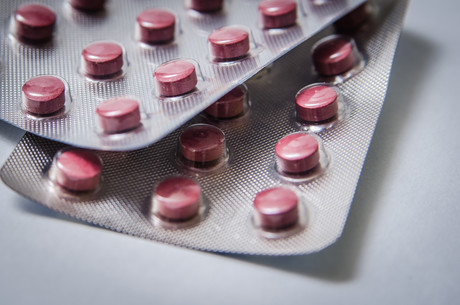How fake drugs end up in our public health system (and how to spot them)

Prescribing and using pharmaceuticals is a matter of trust. Health service providers and patients need to know medicines are genuine. “Counterfeit” medicines that do not contain enough, or any, of the pharmacologically active ingredients are potentially harmful.
For example, you would not want to use medicines adulterated with brick dust, plaster, rat faeces or other contaminants. If you are relying on antipsychotics, antibiotics and antivirals, blood thinners or other medicines to support your health, you want them to work.
We all need antibiotics to be genuine. In this case, counterfeits that do not provide the required full dose encourage resistant strains to develop rather than merely not helping the individual patient.
Questions about trust and counterfeiting have been highlighted in litigation over the past two months. A case recently come to light in New South Wales in which counterfeit Viagra had entered the hospital system, and identified by staff preparing the medication to treat children with pulmonary hypertension (a form of high blood pressure).
But how do fakes get into the system? And how can we deal with them?
Who regulates fake drugs, and where do they come from?
The supply of pharmaceuticals in Australia is regulated by national and state law about how they are produced, imported, distributed and dispensed. It is a complex but coherent regime that involves national drugs and medical devices regulator the Therapeutic Goods Administration (TGA), the Department of Immigration and Border Protection (customs inspections at the border), health professions, the Australian Health Practitioner Regulation Agency (AHPRA) and Australia Post, along with pharmaceutical manufacturers and importers. Industry plays an important part.
We do not have a strong sense of how many counterfeit drugs are in the public health system. Numbers are probably small, compared with what has been detected overseas and with consumers who are engaged in personal importing with or without a prescription.
It is likely that some counterfeits are manufactured locally but it takes skill to fake packaging, invoices or other documentation said to authenticate quality. Some counterfeits are imported and slip past customs.
Fake drugs get into the public health system when pharmacists and hospital procurement staff trust a wholesaler when they shouldn’t or take a kickback to buy “good enough” counterfeits.
Two cheers for industry
Public health analysts have been concerned about pricing and misuse of patent and trade mark law by powerful multinational companies that dominate the global market for pharmaceuticals.
But major drug companies, along with health practitioners, are working actively to detect counterfeits. That effort is increasingly underpinned by technologies that aim to ensure authenticity (for example, making it more difficult to fake packaging) and to indelibly track passage of a specific batch of medicines from the manufacturer through the warehouse and the dispensary to patients.
Comprehensive real-time tracking involves standardisation and investment in infrastructure. This also favours very large enterprises that enjoy economies of scale and have the resources to meet expectations regarding compliance with standards in best-practice manufacturing and distribution.
Why we need stronger law and better enforcement
The recent litigation in NSW highlights two concerns: the need for stronger law, and better enforcement.
Global intellectual property agreements such as TRIPS (Agreement on Trade-Related Aspects of Intellectual Property Rights) have increasingly emphasised penalties for counterfeiting. They are reflected in Australian legislation. It is worth asking whether we need tougher sanctions for fake medicines and a more nuanced approach to copyright infringement than currently evident. A pirated movie will not kill you. A counterfeit blood-thinner might.
The significance of harms from counterfeiting means that corporations and individuals who knowingly distribute counterfeit drugs or who are negligent in distribution should arguably face severe sanctions – for instance, with permanent removal of accreditation and substantial fines to deter malpractice.
A more transparent approach by watchdogs such as the TGA would also be of benefit.
In the past that agency has attracted criticism for responses to offshore and local problems, and been resistant to scrutiny about its performance.
Increased transparency at the TGA would foster trust, and enable an informed assessment of whether the watchdog needs more resources and different priorities.
Bruce Baer Arnold, Assistant Professor, School of Law, University of Canberra
This article was originally published on The Conversation. Read the original article.
Originally published here.
Brain and kidney injury treatment after cardiac surgery
A multi-site study to test a treatment that may reduce brain and kidney injury after cardiac...
Domestic violence education: its place in pharmacy
Interviews with pharmacy practitioner educators have identified challenges and opportunities...
Don't Rush to Crush+ — the new digital edition
Australia's essential guide to administering oral medicines safely, Don't Rush to...









